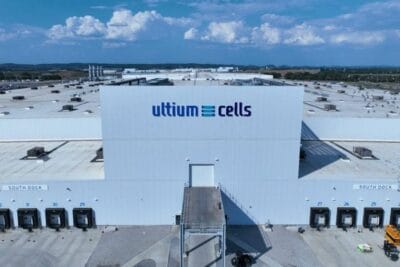Second-life project Anubis reutilises e-bus batteries
VDL Bus & Coach and energy company RWE set up project Anubis to transform ageing bus batteries into energy storage. Powerpacks of 43 electric buses in service at TransDev will form a megawatt storage system in Moerdijk, the Netherlands.
“In project Anubis, we are initially using batteries taken from 43 electric VDL buses operated by Transdev in Eindhoven since 2016,” explains Paul van Vuuren, CEO of VDL Bus & Coach. “These vehicles are currently getting new and larger battery packs, but the used batteries still have enough capacity to be used in stationary applications.”
The battery capacity amounts to 7.5 megawatts, coupled into one large battery pack at the RWE power plant in Moerdijk. The company is also working on battery projects in Germany, the UK, and the United States and says the ambition is to grow capacity to 3 gigawatts in the coming years. The most recent installation uses batteries from Audi electric cars at an RWE power station in Herdecke, Germany.
Now project Anubis is to show how bus batteries can form the basis for even larger stationary energy storage.
Roger Miesen, CEO of RWE Generation, said they were “demonstrating that technical challenges related to the construction and operation of plants like this can be overcome”. He also mentioned “high-quality recycling” at the end of this next life cycle without going into detail.
With more than 1,100 VDL electric buses operating in Europe, CEO Van Vuuren also expects “to learn a lot” and help create a future where second-hand bus batteries are used as energy storage systems before being recycled.
Bart Kraayvanger, Manager ZE and Facility Support Transdev Netherlands, was glad to be “once again involved in these progressive and large-scale developments in the reuse of bus batteries”.
Assuming that all buses and increasing numbers of cars and lorries in the Netherlands will run on electricity after 2030, the companies expect more than 150,000 tonnes of batteries to become available for recycling and further life cycles every year.





0 Comments